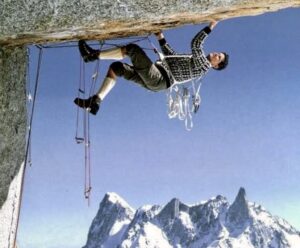What climbing the world’s highest peak means today. Read an interview with mountaineer, polar adventurer and explorer Damien Gildea.
How do you comment on the crowds climbing Everest every year (l.e.: over 700 summits reported this season)?
Nowadays, I try not to comment on the Everest crowds every year. The number of people is relatively similar now from year to year, the big increases in numbers happened years ago. Sometimes now there is more concentration of people on certain days in May because they have better weather forecasts that show the optimum times that everyone tries to fit into. The changes are more how those people are climbing – more bottled oxygen on higher flow, more Sherpas, less-experienced clients, particularly from China and India. More clients from these two nations are the real change on Everest recently, in terms of people or crowds.
What does a piece of paper – the summit certificate – say about an Everest climber on standard routes, these days?
A piece of paper, a summit certificate, is just a sad sign of the need for external validation, as if without it the experience, the process, was not enough, was not complete without the government telling you it’s complete. Do you need to win a trophy to enjoy or benefit from playing a sport? Everest now is just trophy-hunting, but then it always was in the past too. The difference now is that clients get others to win the trophy for them, but claim they earned it. It’s also conforming to a bureaucracy, which is traditionally something that climbers tried to escape. But in the bigger picture of climbing, Everest summit certificates are not important in any way. Just a minor symptom of devolution 🙂
[…]
The full interview is available here.
***
About Damien Gildea:
Damien Gildea is a mountaineer, polar adventurer and explorer who has led expeditions to the high mountains of Antarctica. In 2010, he published“Mountaineering in Antarctica: Climbing in the Frozen South”, with the peaks and mountains of the most remote and wild regions of Antarctica.
Previously, Damien had published the Antarctic Mountaineering Chronology (1998), followed by topographical maps of Livingston Island (2004) and Vinson Massif (2006).
Damien Gildea has also guided a ski expedition to the South Pole and made various journeys to the Himalaya, Karakoram, and Andes (Explorersweb).





